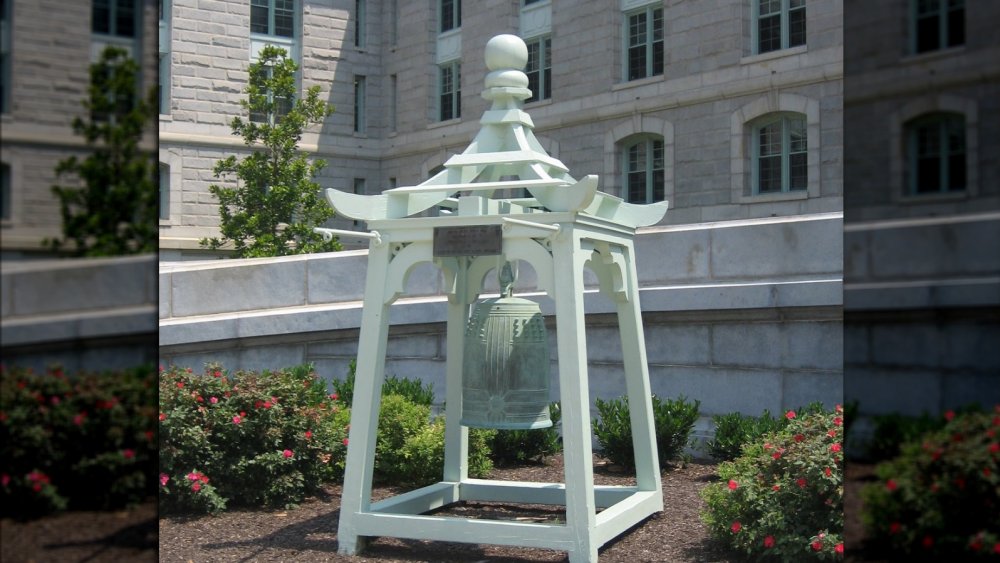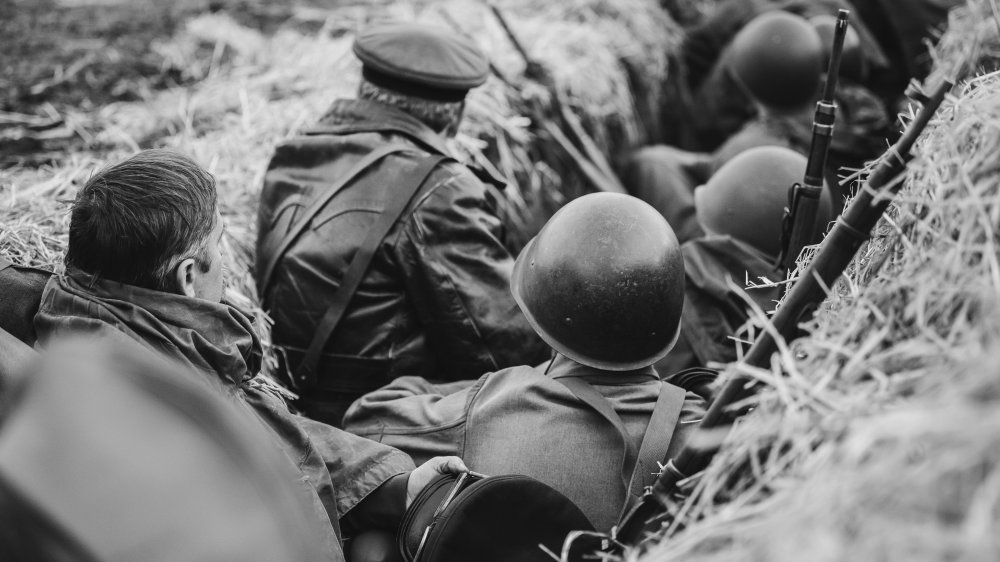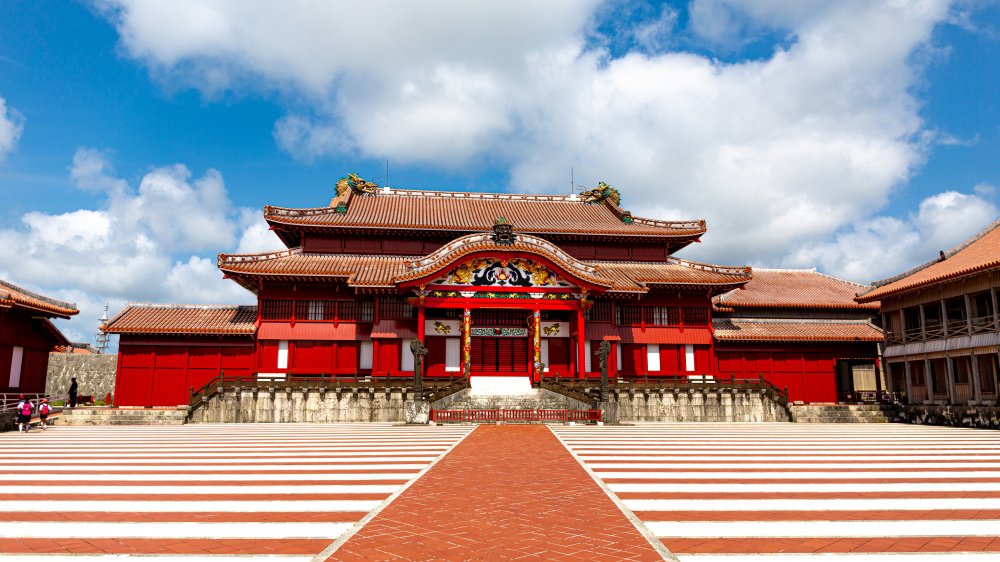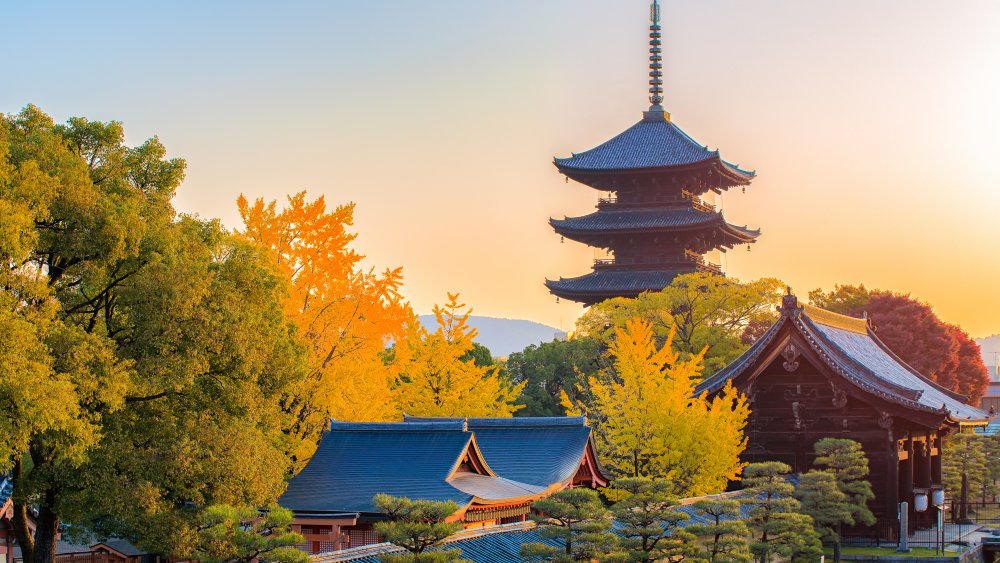The Story Of The Bell That Was Rung At The End Of WW2
The world has seen few tragedies quite as immense as World War II. The Nazis slaughtered millions of people, as did the Chinese. Japan bombed Pearl Harbor and set kamikaze fighter pilots against American jets. The United States put those of Japanese ancestry into internment camps. Jews were facing genocide. An entirely new and devastating weapon was brought into existence that many wish never was. All in all, it was a stain on Earth's permanent record.
The greatest moment of any war is when it comes to an end. The devastation that occurred during WWII took decades to rebuild. At the time, rebuilding looked like a shimmering jewel in the distant horizon compared to the dark times of the war. As with all of the most exciting times to read about in history, you didn't want to experience them. You could only imagine the excitement the people felt in 1945 when newspapers printed that fateful headline: "The War is Over." When the bell signaling the end of the war was rung, it was rung hard.
Celebrating the end of a tragedy
Before WWII, the Gokoku-ji bell was only rung for one upstanding and very professional reason: for the U.S. Navy football team to gloat over beating the U.S. Army football team. Legit. And that's pretty much what WWII was, right? Just a bunch of giant football teams using deadly weapons to wipe out a large portion of the world. Okay, it was much more tragic than a football game. It was devastating. At least 60 million people died in the war, according to the National WWII Museum. Two atomic bombs were dropped for the first time, and hopefully the last time. The entire world bled.
So, you can only imagine how people felt at 7:00 PM on August 14, 1945, when President Harry S. Truman announced that the war was over. Japan had finally surrendered. Over the next few days, while the slackers were finally get caught up on the news, the whole country, if not the world, celebrated. That brings us back to Annapolis, at the U.S. Naval Academy, where the Gokoku-ji bell lived at the time. The Washington Post reported that so many people rang the bell in celebration — pounding it with fists, shoes, whatever they could get their hands on — that it actually cracked.
A piece of Okinawan history
The Gokoku-ji bell has been around longer than the United States of America. The bronze bell was cast by a metal worker in Japan in 1456. It was a gift for King Sho Tai-Kyo. Per Smithsonian records, the bell is inscribed with the phrase: "May the sound of this bell shatter illusory dreams, perfect the souls of mankind, and enable the King and his subjects to live so virtuously that barbarians will find no occasion to invade the kingdom." Okay, so it said that but in a language we can't really type.
By the time Commodore Perry arrived in Japan, the bell was living in a Buddhist temple. He received the bell as a gift from the Ryukyu Kingdom, which later became Okinawa, in 1854. He then brought the bell back to the States. Then he died. Since he was dead and therefore had no use for a giant bell, Mrs. Perry gave it to the U.S. Naval Academy in Annapolis. There the Gokoku-ji bell lived for nearly 130 years.
The return of the Gokoku-ji bell
There seems to be some conflict between sources on whether the bell was given to Commodore Perry or if the bell was "given" to him. Usually the terms "taken" or "brought back" are used to avoid the potential ethical implications that would arise if Commodore Perry looted the bell. So, hey, we'll call it a gift just in case. Either way, the Gokoku-ji bell has found it's home in the Okinawa Prefectural Museum after the U.S. Navy returned it in 1987.
The regift was more important to Okinawa than you might think. Okinawa as a culture has had a bit of an identity crisis. The island(s) was virtually destroyed by the time Gokoku-ji rang out the end of WWII and have since had to rebuild. Many of their traditional items were lost. But that's not the only reason. Okinawa is like the bayou of Japan. They're looked at as, basically, the backwater hicks of the nation, making it all the more necessary to rebuild and rediscover their own cultural identity. And, the famous Gokoku-ji bell from 1465 helped give them back a piece of what was previously lost.



